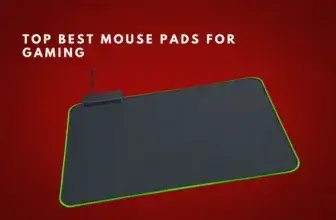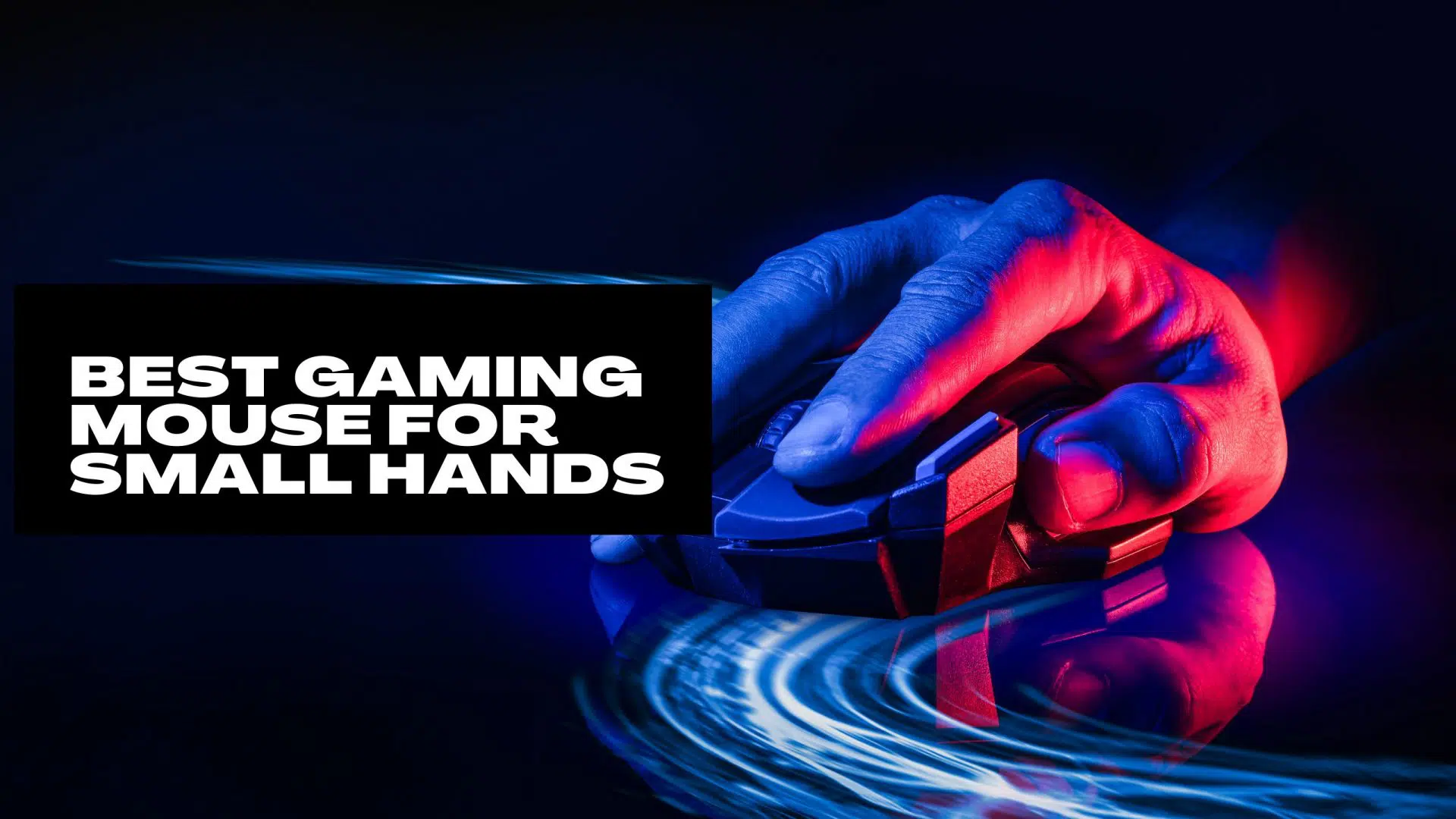A trackball is a special device that helps you to keep the ball of your mouse pointing in the right direction when you’re using your computer. It’s a convenient device to have around, and it can help you to avoid wrist pains. Despite the fact that trackballs have many advantages, there are still some drawbacks to them. Here’s a look at some of these.
Click To See Content Of This Post
What Is a Trackball?
A trackball is a type of computer peripheral device that is similar to a mouse, but instead of moving the device to move the cursor, a trackball uses a ball that is located on the top of the device and can be rolled with the fingers to move the cursor on the screen.
The trackball has buttons, similar to a mouse, that can be used for left-clicking and right-clicking, and in some cases, additional buttons can be used for other functions such as scrolling or opening the start menu.
Trackballs are often used as an alternative to a mouse, especially for those who have difficulty using a traditional mouse or who prefer a more ergonomic design. They can be used by people with carpal tunnel syndrome or arthritis, as well as by people who prefer a more stationary input device.
Trackballs are popular among graphic designers and artists, as they are more precise than a mouse. They are also used in some industrial and gaming applications.
Overall, a trackball is a type of pointing device that uses a ball on top of the device to move the cursor on the screen, it is an alternative to a traditional mouse and it offers precision and ergonomic design.
Ergonomic theory
If you’re in the market for a new pointing device for your computer, you may have heard of a trackball. Although these devices aren’t exactly new, they are gaining in popularity. Unlike standard mice, they are designed to provide ergonomic benefits without sacrificing performance.
Designed to rely on the thumb, these trackballs are small in size and allow users to execute a variety of commands. Some models even provide a contoured area where the hand can rest. However, while these mice may sound fancy, they are often more expensive than their counterparts.
Although a trackball may not have the same capabilities as a standard mouse, some users claim they are superior in the long run. They also have the benefit of reducing stress on the wrist and arm.
Despite these claims, there hasn’t been a great deal of research on the topic. A few studies have looked at how well these devices can perform, but there hasn’t been a definitive answer yet. Using the right equipment is the key to a successful transition, but it’s not the only thing to consider.
In the end, you’ll probably have to find out for yourself. But for now, it’s worth examining trackball’s most prominent features. While many of them are in the same ballpark as a regular mouse, a few more stand out.
The trackball, as a pointing device, is a cinch to use. It has been around for almost two decades and has seen many incarnations. Depending on the model, you can get a device for around $50 or less. And it’s not just the users who benefit; some disabled and elderly people find them easier to use.
Another notable feature is that they require much less space. That might be one reason why some people have trouble using traditional mice. Thankfully, they’re easier to clean too.
There are even trackball mice available that don’t leave you with an empty hand. Luckily, these models have an ejection button, which makes it easier to dispose of the device. Plus, they are more aesthetically pleasing than their predecessors.
Disadvantages of a trackball
A trackball may sound like the ideal input device, but there are a few pitfalls. They can be expensive and aren’t always easy to use. In this article, we’ll explore some of the more common issues, such as how the trackball compares to the mouse and other input devices, and the advantages and disadvantages of using one.
For the more advanced user, a trackball might be a worthwhile purchase. It can provide you with a variety of benefits, including access to high-resolution screens, and allows you to move around the office more easily than a conventional mouse. However, it can also be a pain to clean.
On the other hand, a trackball is more versatile than your standard mouse. You can use it while standing or sitting. This makes it more convenient to use.
But this doesn’t mean that you have to stick with it. If you’re looking to get into a serious gaming craze, you might be better off with a conventional mouse.
The best part of a trackball is that it takes up less space than a traditional mouse. Some people prefer to use them in their office.
Another benefit of a trackball is that it helps to reduce the risk of RSI (repetitive strain injury) or other arm and shoulder ailments. Using a trackball, you can minimize unnecessary movements, such as twisting your arm to click buttons. Even if you aren’t a competitive gamer, it can help you become more productive.
One of the more notable features of a trackball is its ability to provide accurate cursor movement. Most mice require some kind of friction to keep the ball in place, while a trackball uses a small ball that swivels and rotates, allowing you to control the cursor without moving your fingers.
The trackball’s other advantages include less clutter on the desk, and no need to constantly reposition the device. Trackballs are also safer to use than most other devices. OSHA, the government’s occupational health and safety agency, has deemed them safe.
There are plenty of other input devices on the market, but a trackball is a worthy contender for your next purchase.
Wireless trackballs allow for more freedom
If you are looking for a new wireless mouse, you may want to try a trackball. These mice are ideal for users who desire precision, comfort, and ease of use.
Wireless trackballs allow you to position the device anywhere on your work surface. You can also customize it to include buttons, functions, and shortcuts. Some models are designed to help users with RSI, arthritis, and wrist injuries. They are ideal for professionals such as designers, architects, and programmers.
Trackballs are a great solution for limited desk space. While a regular mouse can take up a lot of space, a trackball can fit just about anywhere. However, they require some setup before you can start using it. Most models require that you install a driver and software.
Some trackballs are available for left-handed and right-handed use. For those who are ambidextrous, Kensington offers the Expert Mouse Wireless Trackball. It can be connected to a Bluetooth-equipped computer or with a USB receiver.
ELECOM’s “EX-G Pro” is a trackball with a 33 ft (10 m) range and eight built-in mouse keys. It also features direct optical tracking that follows the pattern on the ball to detect movement. The battery will last for up to 20 months when used with the included Bluetooth receiver.
Another option is the Logitech MX Ergo. It uses a pair of AA batteries for power. This trackball also features ultralow battery consumption, an innovative sensor, and a low fixed polling rate.
The Ergo series also offers superior ergonomic benefits. It places your fingers in more natural postures to reduce muscle activity.
Many professionals prefer using a trackball over a mouse. Using a trackball can alleviate painful overuse injuries. People with arthritis or RSI can also benefit from the ease of using a trackball.
Trackballs also allow users to adjust their cursor speed. This means that a cursor can be moved faster than with a normal mouse. Users can also customize their trackball with KensingtonWorks programming software.
While most trackballs are designed to be comfortable, there is no one-size-fits-all solution. Each user will need to adapt to their new device.
Common types
A trackball is an electronic device used to control the cursor on a computer’s screen. It consists of a ball that rolls around inside a socket. The user presses the ball with one or more fingers to move the on-screen pointer.
Trackballs are available in different shapes and sizes. They can be used on a flat surface or a desk. Some are wireless, using microwave signals or infrared signals to communicate with the computer. Other types use a cable.
The main function of a trackball is to allow the user to position the on-screen pointer with just one hand. The ball can be made of a rubber or plastic material. If the ball becomes dirty, the performance of the trackball can be affected.
Many users prefer to use a trackball over a mouse. This is because trackballs require less space and offer greater efficiency. However, they can be difficult to use. In addition, they can also be a source of injury. Therefore, it is advisable to choose a pointing device that is ergonomically friendly.
Today, most desktop computers have a trackball. A number of trackballs come with a proprietary interface for specific software applications. For example, some come with RS232, USB, or RS485 interfaces. There are even some with an internal interface that connects to the computer bus via a computer card.
Another feature that makes a trackball attractive is its ability to be used on unstable surfaces. While a computer mouse requires a firm grip on the mousepad, a trackball can be held in the air. Additionally, many models feature an asymmetric design, which may be easier for the user to maintain a comfortable palm grip.
Some manufacturers have introduced trackballs with detachable covers. These devices can be removed and cleaned with a q-tip.
Trackballs can be purchased as standalone devices or as part of a keyboard. Typically, a desktop trackball is enclosed, while a panel-mounted model attaches to a computer keyboard. Panel-mounted trackballs are usually available in a flat frame. Adapter plates are also available.
Users can draw 2D and 3D images, and perform drafting and graphics tasks. Moreover, a trackball can be used to connect to a PC playing a movie.
What is the difference between a trackball and a mouse?
The main difference between a trackball and a mouse is the way the cursor is moved on the screen. A mouse uses a ball or optical sensor on the bottom of the device to detect movement and translate it into cursor movement on the screen. A trackball, on the other hand, uses a ball located on the top of the device and can be rolled with the fingers to move the cursor on the screen.
Other differences include:
- Ergonomics: Trackballs are more ergonomic than traditional mice, as they allow the user to keep their hand in one position, reducing the risk of repetitive strain injuries.
- Precision: Trackballs are more precise than traditional mice, as the ball can be rolled with a finer degree of control. This makes them ideal for graphic design, editing and other precision-oriented tasks.
- Space-saving: Trackballs take up less space than traditional mice, as they do not require a flat surface to move the cursor.
On the other hand, traditional mice are more widely available and are compatible with more devices, and are also cheaper than trackballs. Also, some users find it easier and more intuitive to use a mouse than a trackball.
Overall, the choice between a trackball and a mouse depends on the user’s specific needs and preferences. Trackballs are ideal for users who prefer an ergonomic design and require high precision, while traditional mice are preferred for their wide availability, compatibility, and ease of use.





